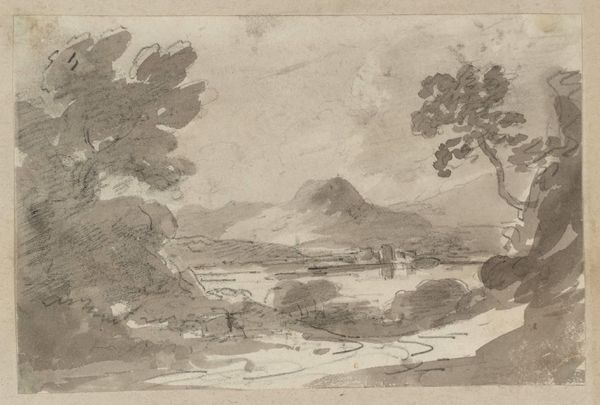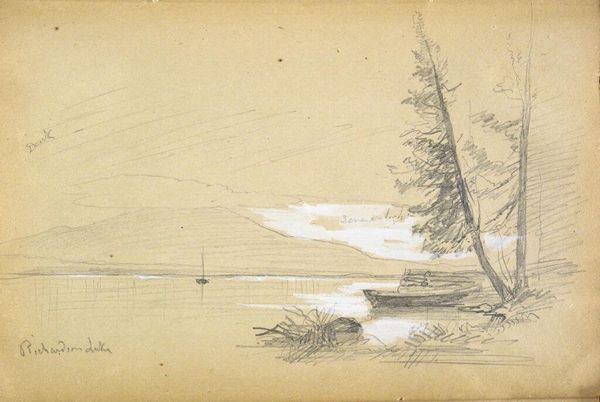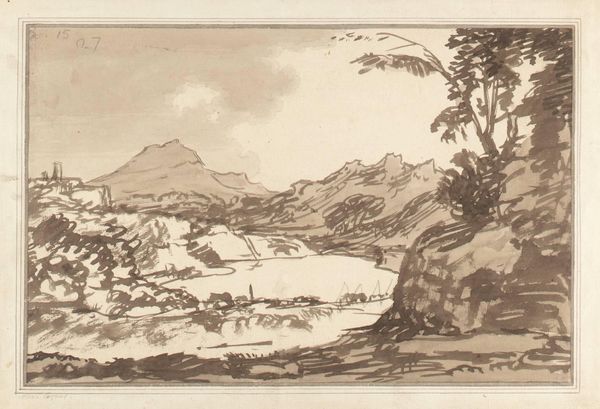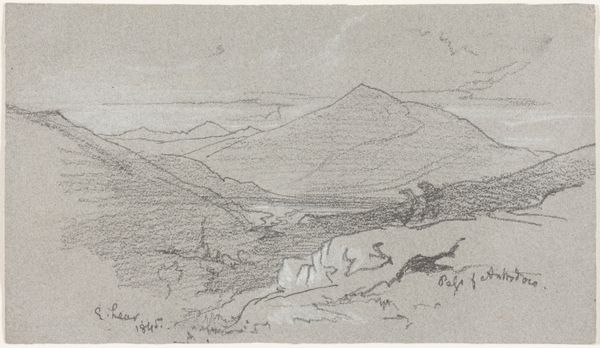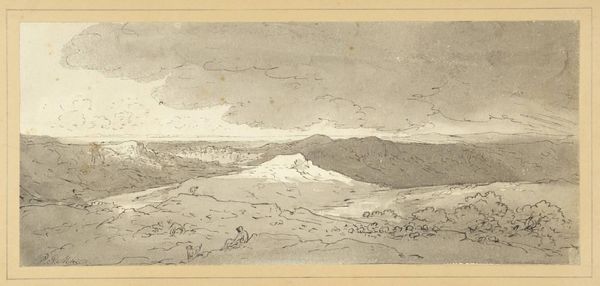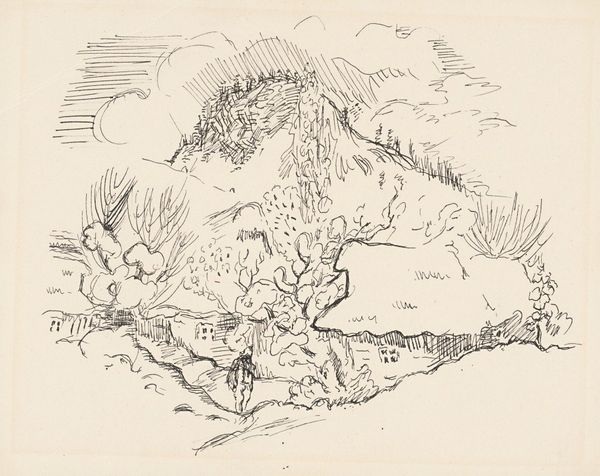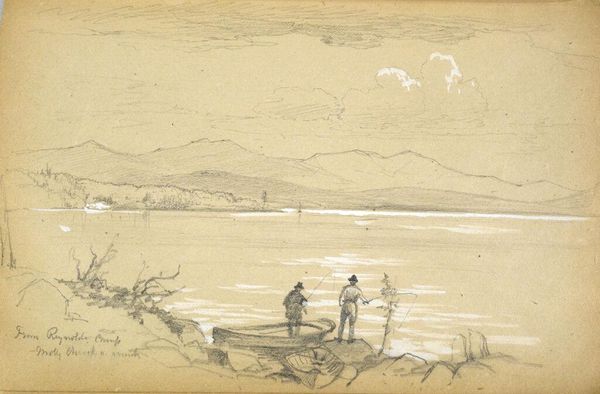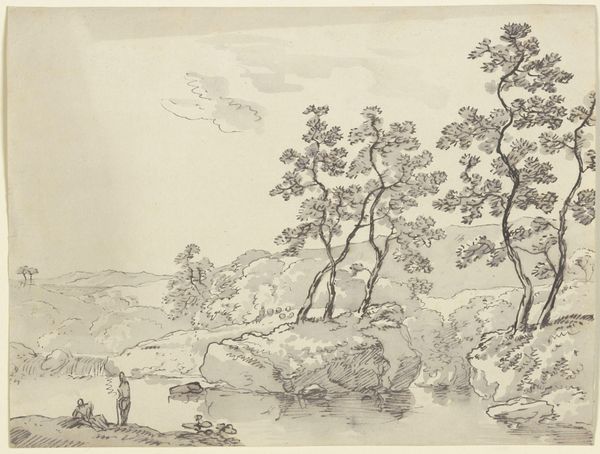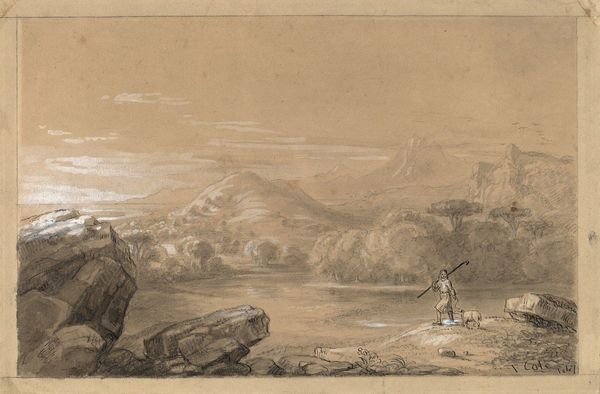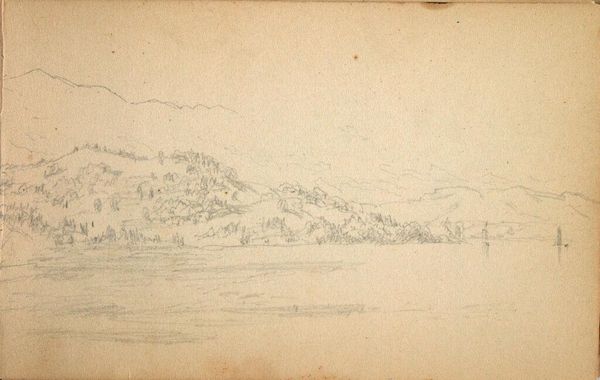
Copyright: Public domain
Editor: Here we have Edward Lear's 1868 ink drawing, "St. Hospice." The delicate lines and muted tones create such a serene, almost dreamlike quality. What immediately strikes me is how the composition directs the eye to the distant mountain. How do you interpret this work through its formal elements? Curator: I would concur on that initial impression of dreamlike composition as it appears the composition relies heavily on linear perspective and the subtle gradations in line weight, no? Observe how Lear employs varied hatching techniques to create depth and texture, almost manipulating light and shadow without the traditional use of tonal modeling. How does this affect the sense of space within the image? Editor: It’s interesting that you point that out! I initially perceived it as slightly flat, but now I notice how the density of lines around the trees in the foreground and on the hills create a clear distinction and add depth and volume, as it draws my eye back. Curator: Precisely. Now, consider the formal implications of this limited palette. What impact does this near monochromatic approach have on the viewer's perception? Editor: Well, the restricted colour choice lends the landscape a sense of timelessness, maybe highlighting the purity of line and form over surface decoration. But I was curious about that mountain view in the back and its lines; it contrasts with the details in the foreground. Curator: You have astutely identified a critical tension within the work. Lear balances precision and spontaneity here. Consider, also, the expressive potential of line itself. Can we deconstruct how lines move throughout the image, defining shapes and forms? Editor: Okay, I see what you mean now. The flow between the trees on either side of the foreground allows for the eye to come back into the artwork. Now it has become clearer that there is definitely an intentional method behind this scenery artwork. Thanks for the explanation. Curator: An engaging conversation! By closely analyzing these fundamental elements, we gain a richer understanding, perhaps, appreciating both Lear's technique and expressive capacity within the landscape genre.
Comments
No comments
Be the first to comment and join the conversation on the ultimate creative platform.

